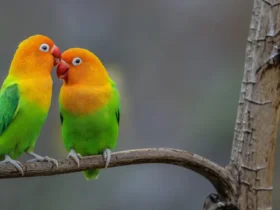In the heart of woodlands and savannas across Africa, the Woodland Kingfisher (Halcyon senegalensis) graces its habitat with vibrant colors, enchanting calls, and an air of regal presence. With its striking plumage, distinct vocalizations, and crucial ecological role, this bird stands as a symbol of the natural beauty and biodiversity found in Africa’s diverse landscapes. In this article, we delve into the world of the Woodland Kingfisher, exploring its characteristics, behaviors, habitat, and its significance within the ecosystems it inhabits.
Woodland Kingfisher images
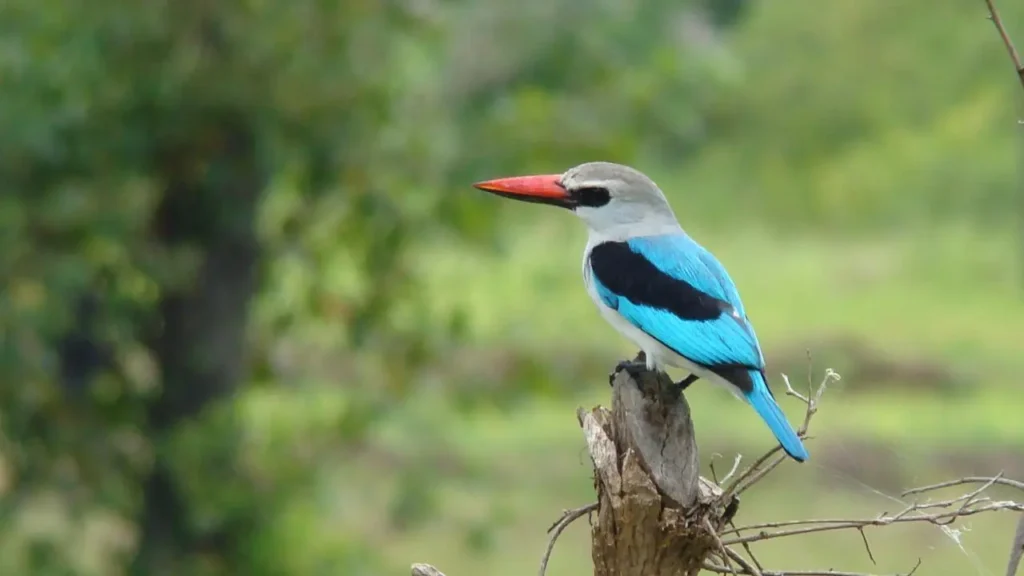
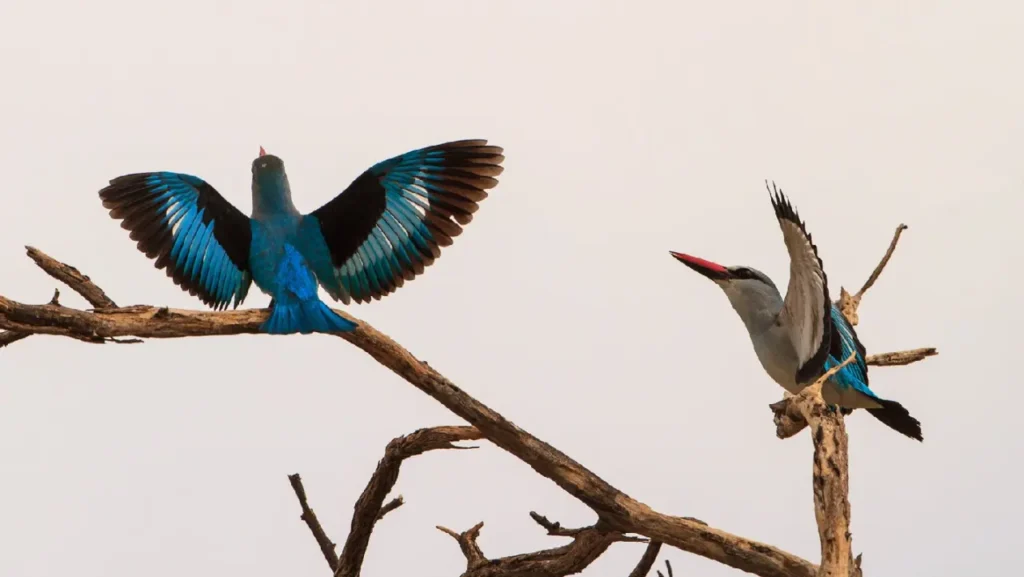
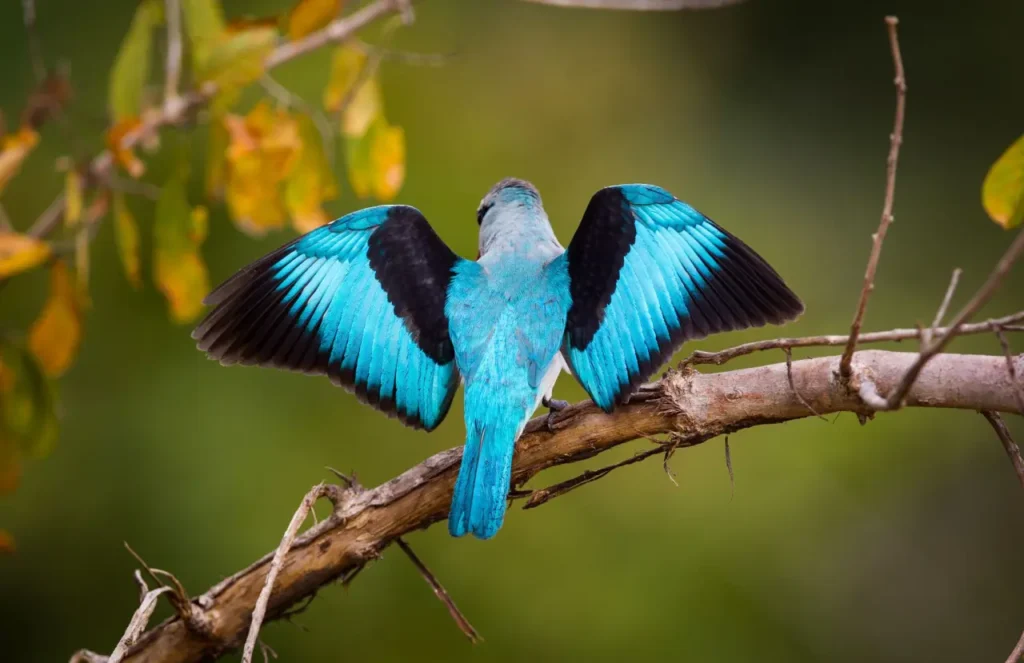
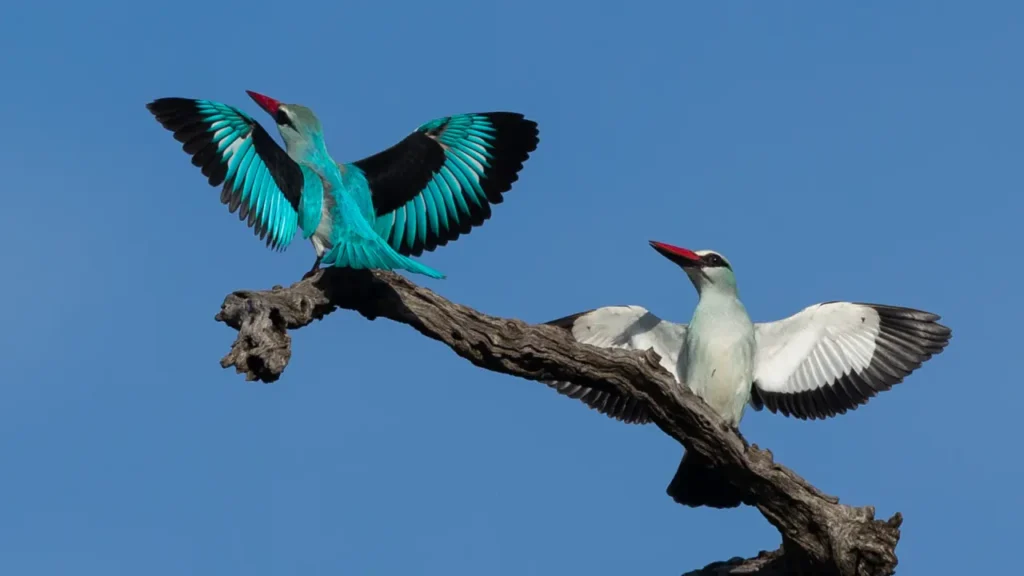
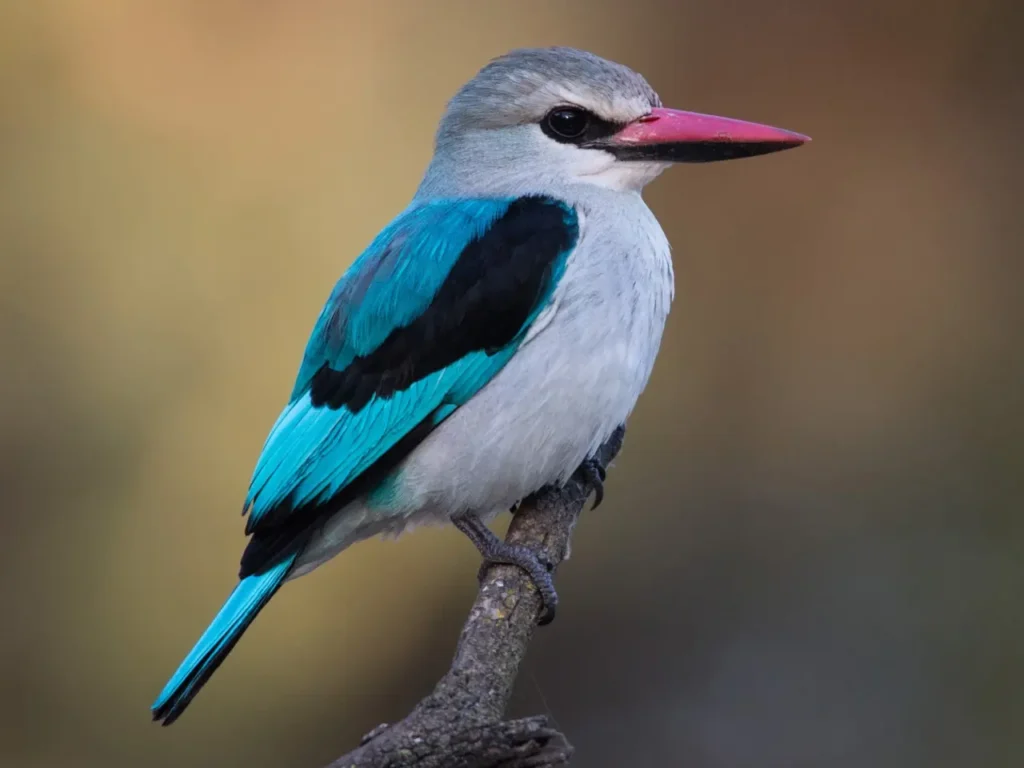
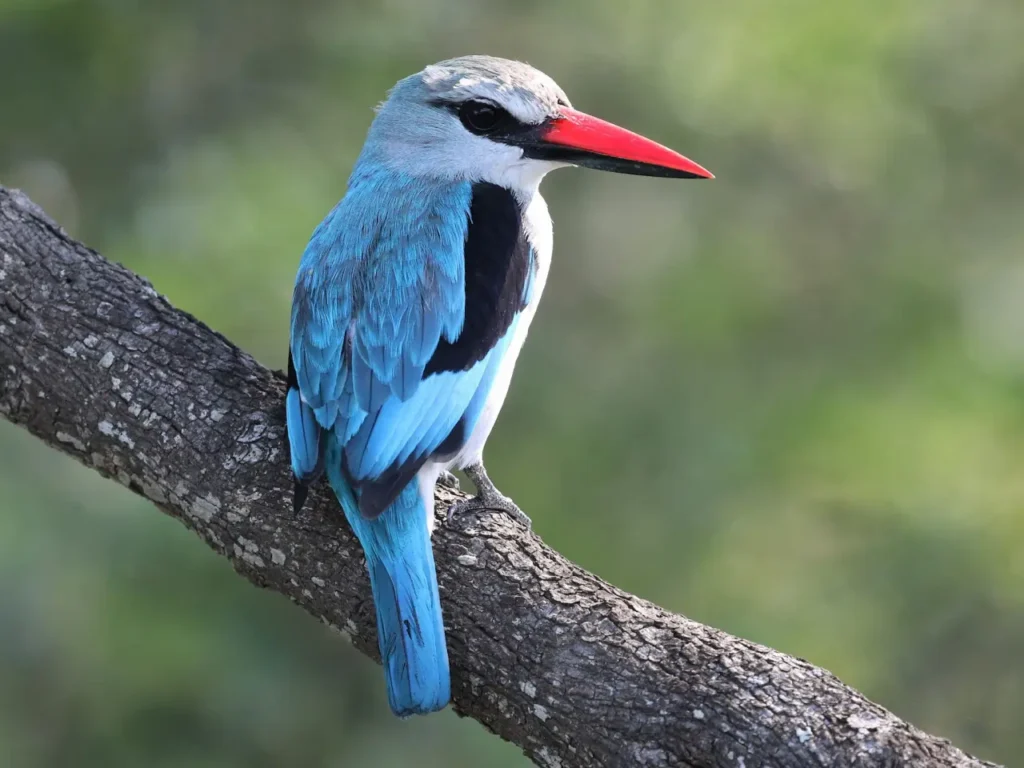
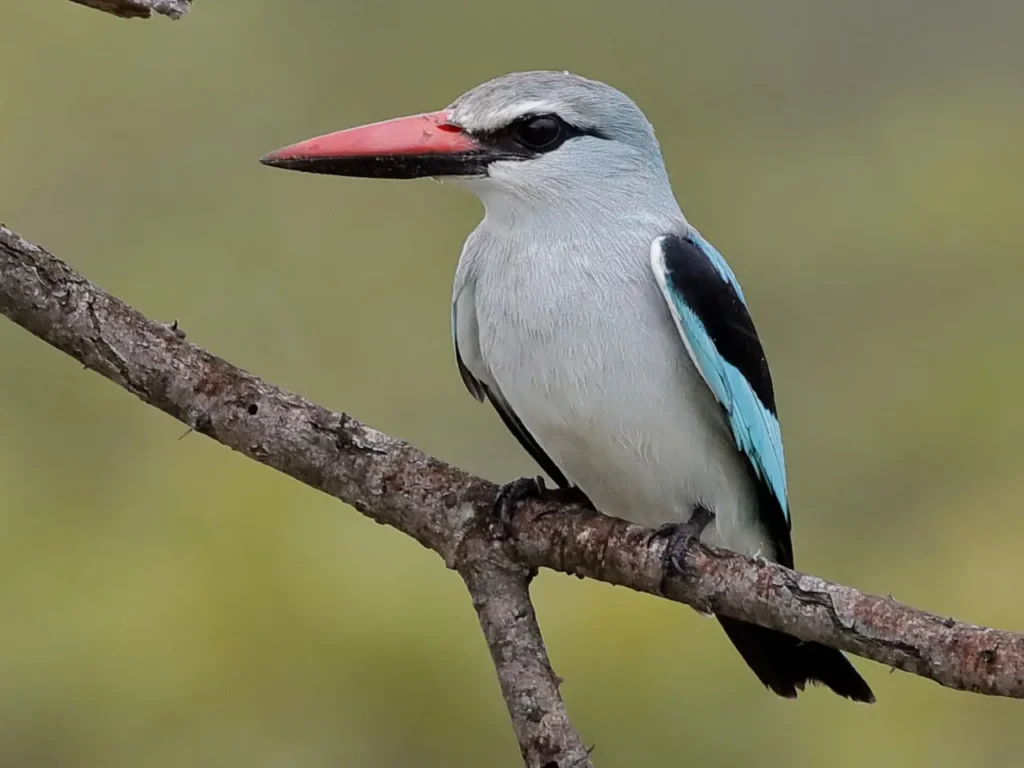
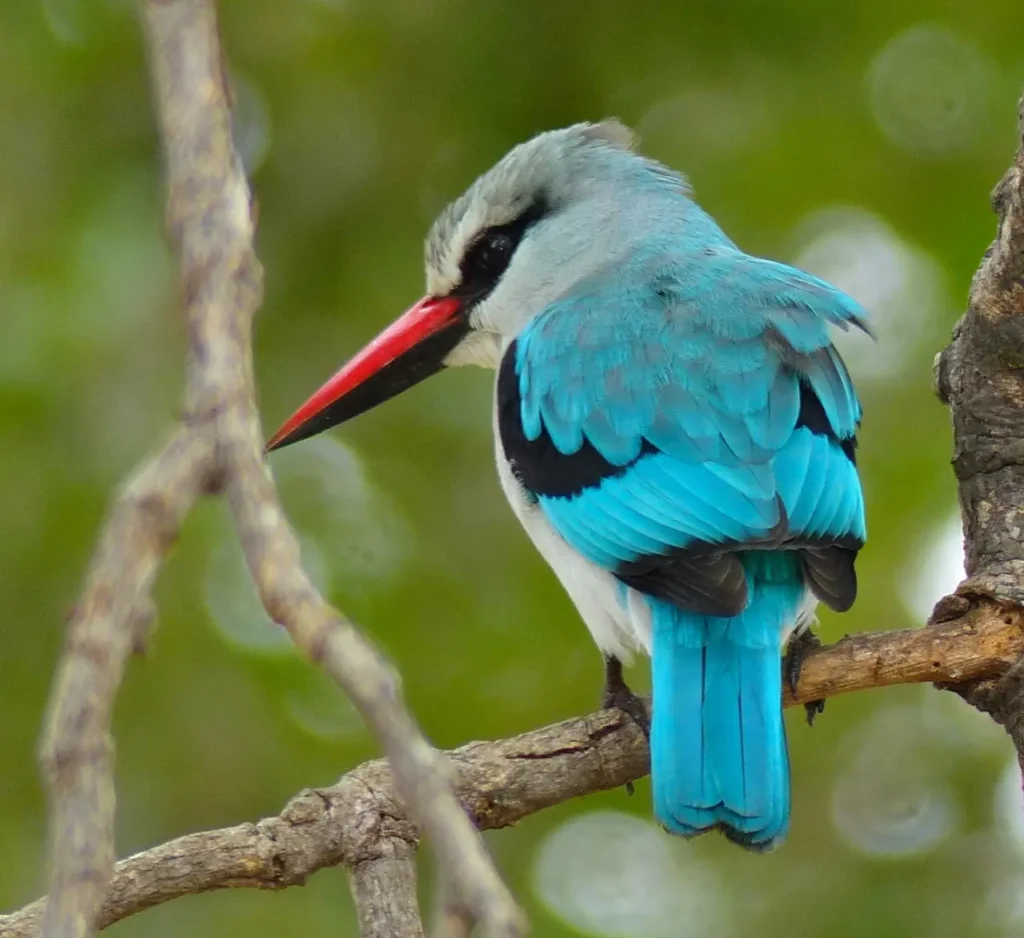
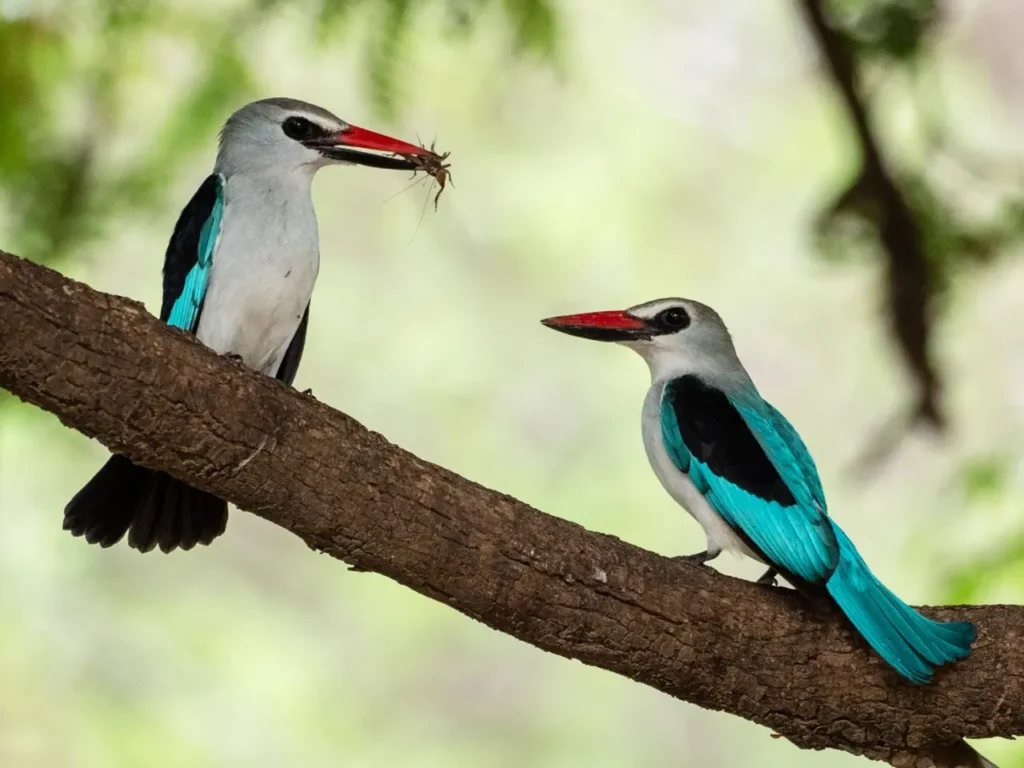
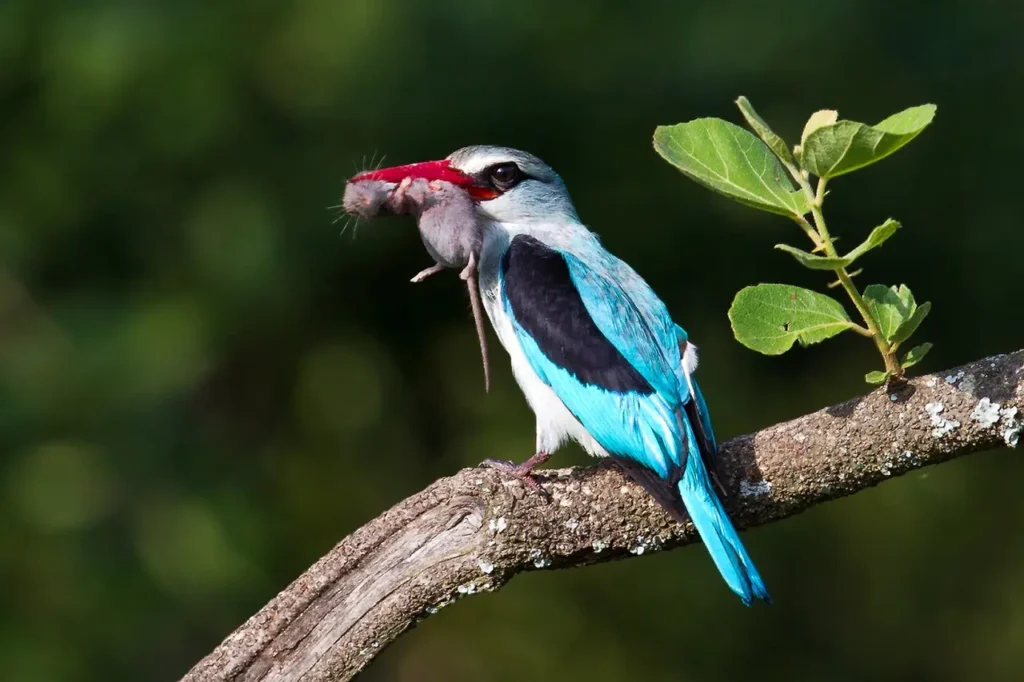
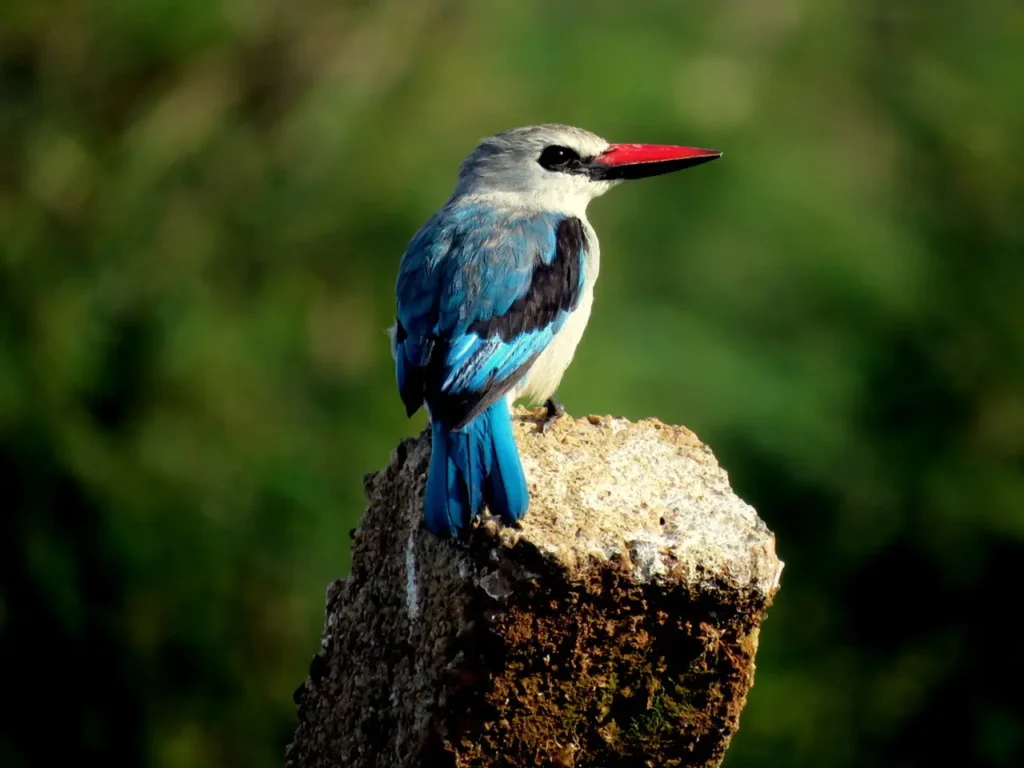
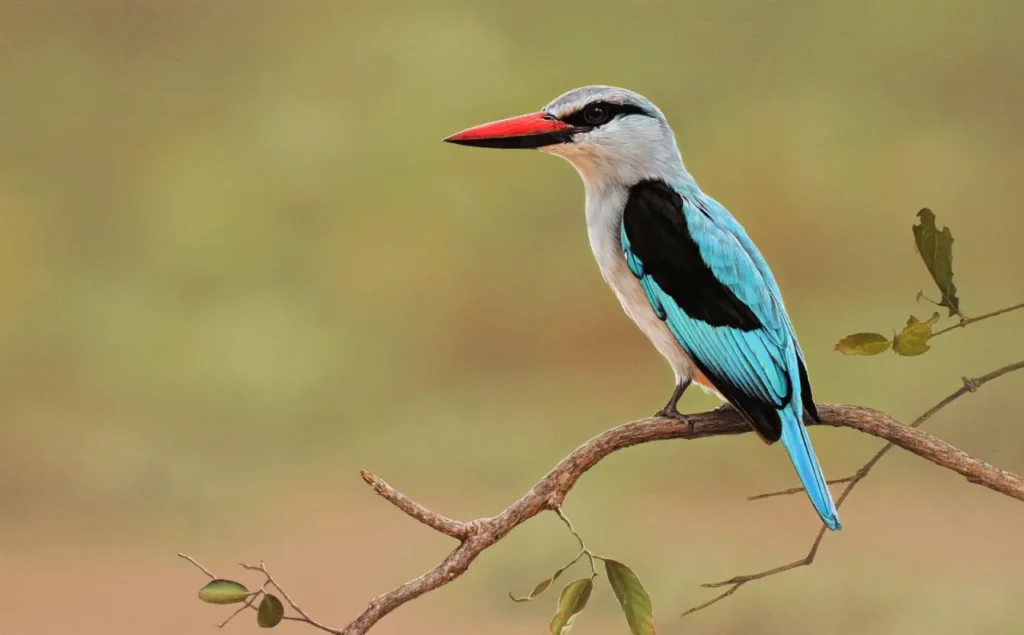
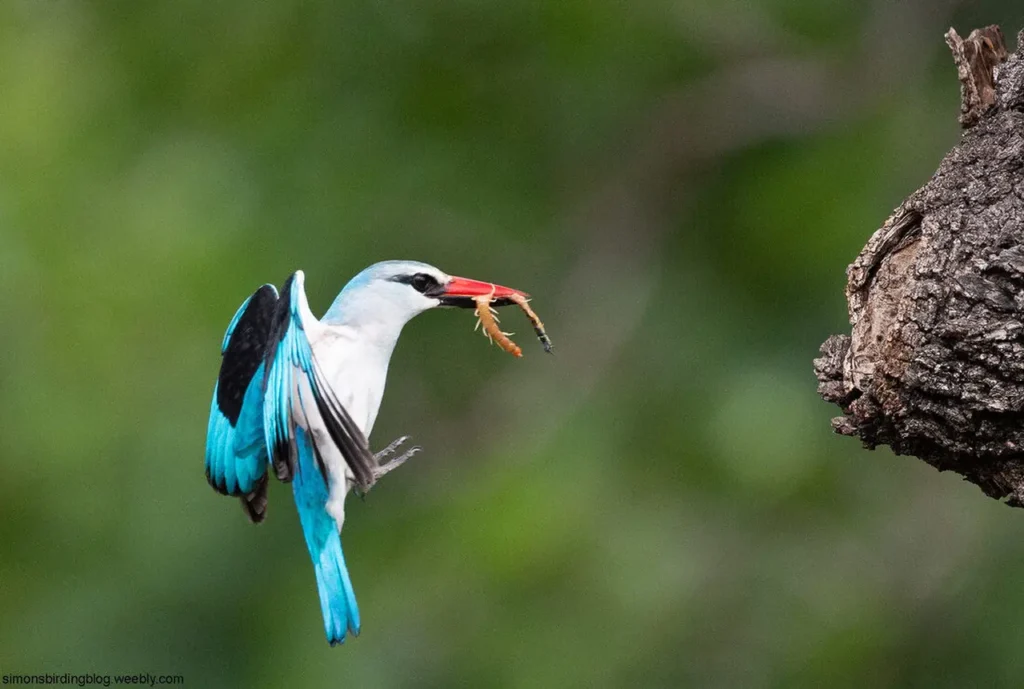
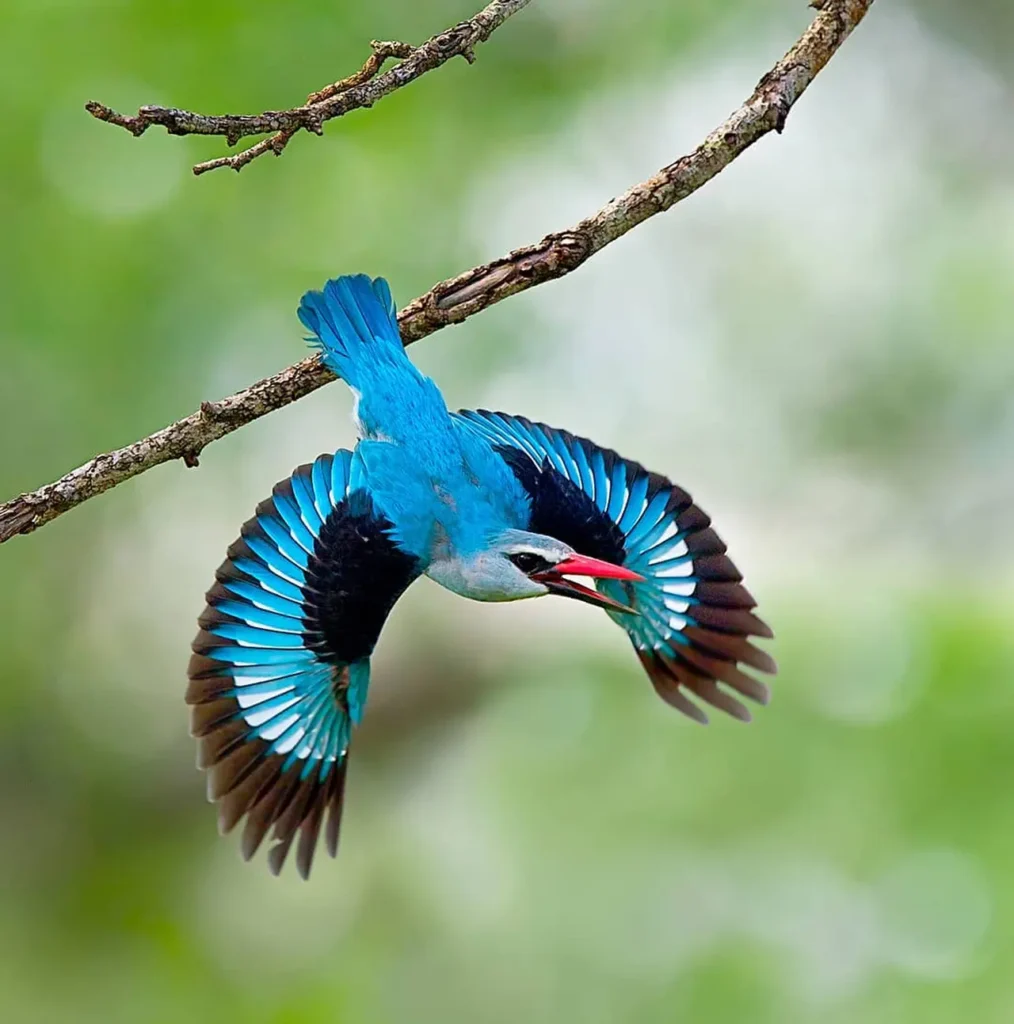
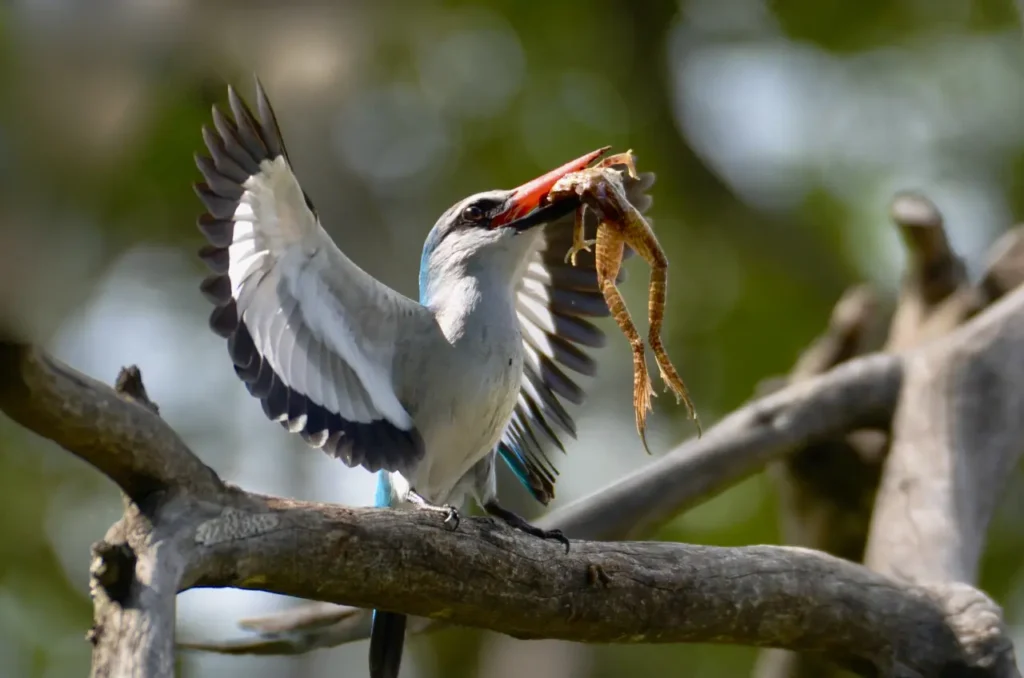
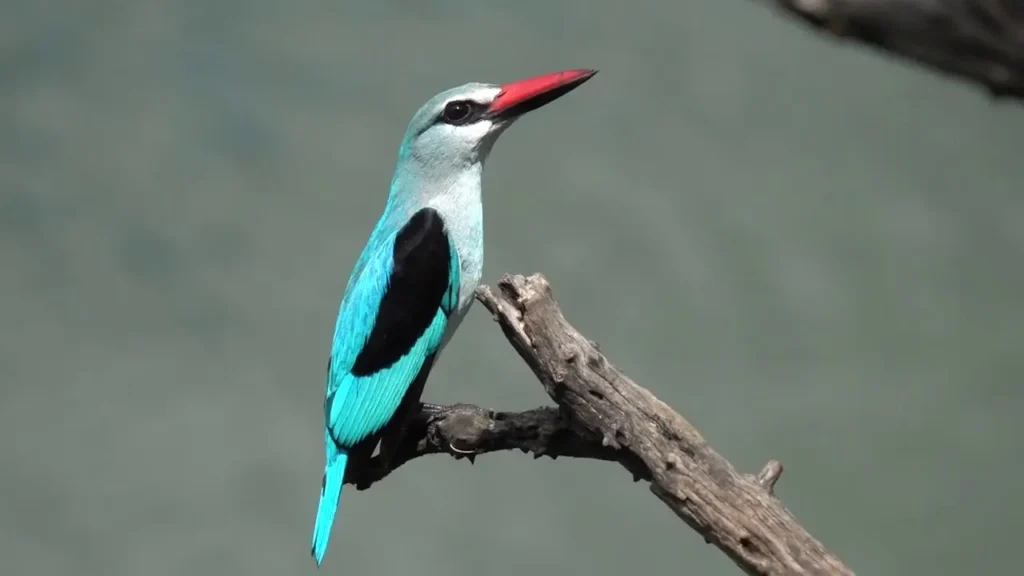
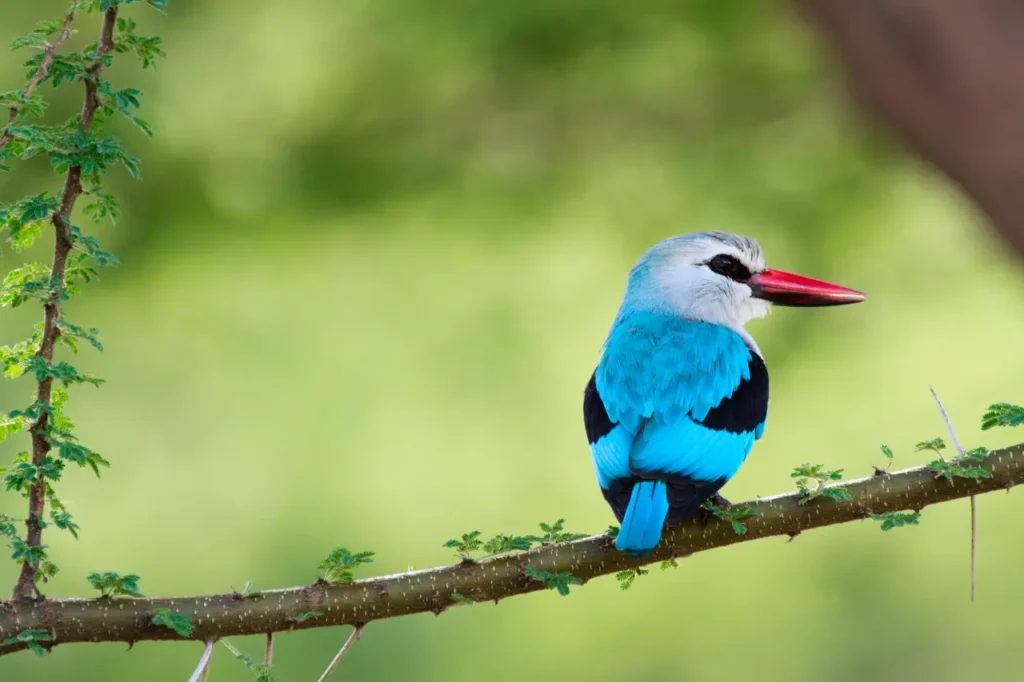
Appearance and Characteristics
The Woodland Kingfisher is a small but charismatic bird known for its stunning coloration. Its upperparts showcase an exquisite combination of bright turquoise blue and white. Its underparts continue the white coloration, while its bill and legs are a rich red-orange hue. These vibrant colors make the Woodland Kingfisher an eye-catching presence against the backdrop of green woodlands and grasslands.
Hunting and Feeding Behaviors
Despite its name, the Woodland Kingfisher does not primarily rely on aquatic prey. Instead, it hunts a diverse range of insects, small vertebrates, and even small amphibians. It employs a sit-and-wait hunting strategy, perching on branches or utility wires, and scanning the surroundings for movement. Once it detects a potential meal, it dives with precision to capture its prey.
This hunting technique demonstrates the adaptability and resourcefulness of the Woodland Kingfisher, enabling it to find sustenance in various environments.
Vocalizations
The Woodland Kingfisher is celebrated not only for its visual beauty but also for its distinctive calls. Its vocalizations are a true melody of the African savanna. The bird’s trilling, repetitive “pree-pree-pree” calls echo through the woodlands, serving as a characteristic sound of its habitat. These calls are often associated with the arrival of the rainy season in some parts of Africa, making the Woodland Kingfisher a herald of changing seasons.
Habitat and Range
As its name implies, the Woodland Kingfisher prefers woodland habitats, including savannas, open woodlands, and even cultivated areas with trees and shrubs. It has a wide range across sub-Saharan Africa, inhabiting regions from Senegal in the west to Somalia in the east and down to South Africa.
Conservation and Significance
The Woodland Kingfisher, while not considered threatened, faces challenges related to habitat loss due to deforestation, urbanization, and agricultural expansion. The preservation of woodlands and the conservation of the ecosystems it relies on are crucial for ensuring its continued presence and well-being.
The Woodland Kingfisher, with its vibrant plumage, enchanting calls, and adaptable nature, offers a glimpse into the intricate beauty of Africa’s woodlands and savannas. Its role as a sentinel of changing seasons and its contributions to ecosystem balance highlight the interconnectedness of life within these landscapes. By appreciating and protecting the Woodland Kingfisher, we embrace the rich diversity of avian life and contribute to the conservation of the habitats that make Africa’s natural beauty thrive.
